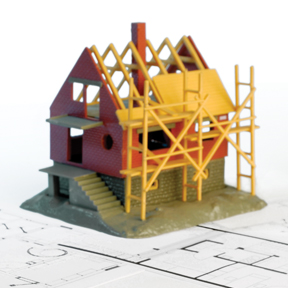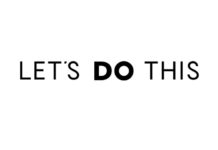
HOW TO EFFECTIVELY LEVERAGE AN IDENTIFY-DIAGNOSE APPROACH.
In every industry and profession, effective teams can and do make a difference. For example, in the construction industry, a very skilled man can build a house on his own. He can draw up the plans, purchase the supplies, hammer, glue, cut and assemble. However, even the most skilled worker realizes that having the help of other professionals makes the job easier and more productive. On a team, each person shares his or her insights and provides specific expertise for an outcome that transcends the confines of any single point of view and is truly extraordinary.
Working in tandem with a team allows individuals to complete difficult tasks more efficiently without one person carrying the entire load. In the dental industry, this is especially evident with the process of dental diagnosing. While it’s true that a dentist can diagnose a patient’s conditions without assistance, it is much more efficient when a team assists the dentist through the process.
Such team members essentially become the ‘eyes and ears’ of the office and help the dentist identify problems with patients prior to the initial examination. One team member who is particularly important in this process is the hygienist. In an ideal dental office setting, the dentist and the hygienist work together using an identify-diagnose approach. This creates a powerful partnership that is key to increasing production and creating overall patient satisfaction.
Identify-Diagnose Approach
Essentially, the identify-diagnose approach involves a hygienist identifying problems in the patient’s mouth, informing the patient about the issues, and then briefing the dentist before the dentist comes into the room to diagnose the patient.
Tawana Coleman, a well-known practice management instructor, is a proponent of teamwork within dental offices. Coleman confirms that the dentist-and-hygienist interactions in an identify-diagnose approach leads to more productive practices. “Whenever I ask attendees at my seminars what they hope to get from the experience, the most common response is [that] they want to be on the same page when it comes to running their dental practice,” Coleman explains. “An identify-diagnose approach allows dental teams to do just that because dentists and hygienists work together for a common goal. When we all agree . . . when we all see things the same way . . . we help more people change their lives through this world of dentistry.”
Fundamental Identification Tools
In the identify-diagnose approach, a hygienist can utilize many different tools. First, hygienists undergo years of training to identify any possible issues when cleaning a patient’s teeth.
Second, hygienists also have—or at least should have—a very specific piece of modern technology at their fingertips—an in-traoral camera.
The intraoral camera is crucial because it allows the hygienist to bring the patients into the identifying process. With an intraoral camera, a hygienist shows patients key images and then explains to them what they are seeing. Bringing the patient on board is a crucial component in making the identify-diagnose approach truly successful. Dr. Richard Guess of Maplewood Laser Dental Clinic in Texas, agrees. Dr. Guess said, “We show the images from the intraoral camera to the patients so they can see what teeth are broken, the decay and the stains. This helps the patients both see and understand what we’re talking about.”
So how exactly does a hygienist use the intraoral camera in the identifying process? The following scenario illustrates an effective approach.
During the hygiene appointment, the hygienist uses the intraoral camera to take close-up images of various issues in the patient’s mouth. After taking the images, the hygienist immediately shows them to the patient, which is an opportunity to educate the patient. During this process, the suggested dialogue might go as follows:
Hygienist: “I want to show you this tooth right here. Can you see this area?” (point to a specific issue in the image like a fracture or area of decay)
Patient: “Oh yes! I can see that. What is it?”
Hygienist: “This is a fracture (or area of decay, etc.) in your tooth. This is definitely something the dentist will want to take a closer look at today.”
True, a conversation very similar to the previous one could have happened without the use of the images from the intraoral camera. However, with the images, the patient sees what the hygienist sees. The patient knows that there is a fracture, because he or she sees it. When patients see the problems in their mouths, they can understand the issues and will most likely want to do something about it.
Hygienist Sarah Waldeck from Dr. Jeff Miller’s office at Harrison Family Dental in Ohio suggests that an intraoral camera is ex-tremely beneficial with the identify-diagnose approach. “When I take pictures of things and put them up on a larger screen where the patients can see it, they understand what is going on in their mouth instead of just taking my word for it. This helps [patients] to trust us as a dental practice. They can see that what we’re telling them is really true.”
Dr. Daniel Reardon of Black Canyon Dental in Colorado echoes Waldeck’s statement. Dr. Reardon found similar success with the use of an intraoral camera in his office. He said, “Our patients love it! The camera helps them to see exactly what we’re describing to them and eliminates confusion.”
In the sample conversation between the hygienist and the patient, it’s important to note that the hygienist does not diagnose the patient’s condition or suggest any kind of treatment plan. This is crucial because the law prohibits anyone except a dentist from diagnosing dental issues. The hygienist merely identifies a possible problem in the patient’s mouth, shows it on a screen and then acknowledges that the dentist will consider it in the diagnosis.
Once the hygienist educates the patient and shows images from the intraoral camera, he or she then leaves the patient in the examination room and consults briefly with the dentist. The hygienist explains the patient’s situation, shows the dentist the images, and identifies what areas might be problematic. After the hygienist completes this explanation, the dentist has enough information to enter the examination room, diagnose and present an appropriate treatment plan to the patient in an effective and efficient way.
Improving Treatment Presentations
One of the great advantages of the identify-diagnose partnership is that it allows dentists to spend their time with patients more productively. Because dentists don’t have to waste time searching for the already-identified issues, they can take a look at the whole mouth and find more in-depth treatment to be completed. By so doing, dentists can offer more comprehensive treatment options to the patient, which ultimately benefits both the patients and the practice.
Dr. Reardon sees a variety of benefits by using the identify-diagnose approach in his practice. When he visits with a hygienist prior to seeing the patient, an advantage is a ‘sneak peek’ into the temperament, mood or time restraints of the patient. For example, some patients might be in hurry and not have time for a lengthy conversation with the dentist. In that case, Dr. Reardon knows to present with brevity or schedule a follow-up appointment for more in-depth cases.
 Other patients might be a little nervous and need to be approached in a gentler manner. Such patients may also benefit from a follow-up appointment. Dr. Reardon gets all the information from the hygienist before he enters the examination room and thus can tailor his presentation to a patient’s specific needs. “Being aware of the psychology behind the situation definitely lets me know what version of myself I need to show to the patient that day!” Dr. Reardon explained.
Other patients might be a little nervous and need to be approached in a gentler manner. Such patients may also benefit from a follow-up appointment. Dr. Reardon gets all the information from the hygienist before he enters the examination room and thus can tailor his presentation to a patient’s specific needs. “Being aware of the psychology behind the situation definitely lets me know what version of myself I need to show to the patient that day!” Dr. Reardon explained.
Another benefit is addressing both the obvious issues in the patient’s mouth as well as deeper concerns. Dr. Reardon said, “When I am prepared ahead of time by the hygienist about the patient’s basic needs, it’s easier to look at the patient’s mouth and find opportunities for more advanced treatment.” The patient-briefing part of the identify-diagnose approach is very important for successful treatment presentations. Dr. Reardon said, “Our hygienists are really good about identifying issues and talking to the patients about them prior to my exam. I have found that patients are more willing to accept treatment this way because they have heard about it from two people instead of just one.”
Dr. Guess is also a fan of the identify-diagnose approach. The number of comprehensive cases performed in his office in- creased dramatically after he implemented this method. “The system really gave us the confidence that what we are offering is something special,” Dr. Guess explained. “Prior to learning this approach, I didn’t want to mess with comprehensive dentistry. I would refer all full mouth cases to other dentists because I felt these procedures were too much of a hassle. But now, I have become more of the dentist that I want to be. I can present and treat comprehensively now unlike ever before. This approach has benefited the practice tremendously. We have increased our production greatly. We have also improved our presentation techniques so that the patients really understand the procedures we are recommending. We have a higher treatment-acceptance rate.”
The partnership between the hygienist and the dentist in the identify-diagnose approach transformed the practice of Dr. Jeff Miller. When Dr. Miller first learned about the approach, he applied a few of the principles. However, he decided to take it seriously a few years later.
Dr. Miller asked Tawana Coleman to visit his office for a joint consultation with his team and another office. Dr. Miller’s team took the training to heart, but the other team chose not to. According to Karly Alcorn, Dr. Miller’s dental assistant, “The Monday after training, our office started following what we had learned. We just kind of stuck with it. However, the other office chose not to follow the direction provided. Our office witnessed a tremendous change in productivity while the other office did not.” As Alcorn explained, before Coleman’s consultation, Dr. Miller’s team “was stuck at a production number that we couldn’t seem to rise above. However, since learning this approach, we have doubled the amount of production—monthly and annually. We work a lot smarter now and not as hard as we did before and actually make more money.”
Dr. Miller believes that all dentists should not just consider adding the identify-diagnose approach to their practices, but they should actually DO IT! “They’d be fools not to,” he explained. “It has changed everything about our office. It has changed what we can do for people. Instead of doing piecemeal dentistry, we do comprehensive dentistry. It keeps us happier because we do the kind of dentistry that we like. We don’t just respond to a hole in tooth number 19; instead we respond to a problem that one of our patients is having with their mouth. We don’t just fix teeth. We help the people we care about.”
Putting It Into Practice
The Identify-diagnose approach works best when fine-tuned over time. It might take a while for dentists and hygienists to really get in a ‘groove’ and work together in a systematic way. However, the key is to get started. Hygienists may need a little training to get all the skills they need to properly perform their role as identifiers. Dentists might also need some training on how to improve their comprehensive treatment presentations. Regardless of what skills need to be attained or refined, the most important thing to remember is the critical component of teamwork between the dentist and hygienist. When these two individuals work together effectively, they can produce remarkable results for the practice.
Remember the construction project analogy described at the beginning of this article? The man who was building the house had all kinds of tools at his disposal in order to complete the project. He was amply skilled in his technical abilities, too. However, what he soon discovered was that he didn’t have the people to help him along the way—and the people were the key component for true success. When he added other professionals to his team, the process went more smoothly, the house was built more quickly, and the overall project was a much bigger success than it would have been had he completed it all alone.
Henry Ford, an American industrialist and founder of the Ford Motor Company, once said, “Coming together is a beginning; keeping together is progress; working together is success.” When dentists and hygienists use the identify-diagnose approach to join together and work as an effective team, everyone benefits. The practice runs more smoothly. Productivity increases. And most importantly, the patients receive better dental care because they are provided with comprehensive treatment options. The identify-diagnose approach truly provides an opportunity for dental teams to build something really remarkable in their practice.









